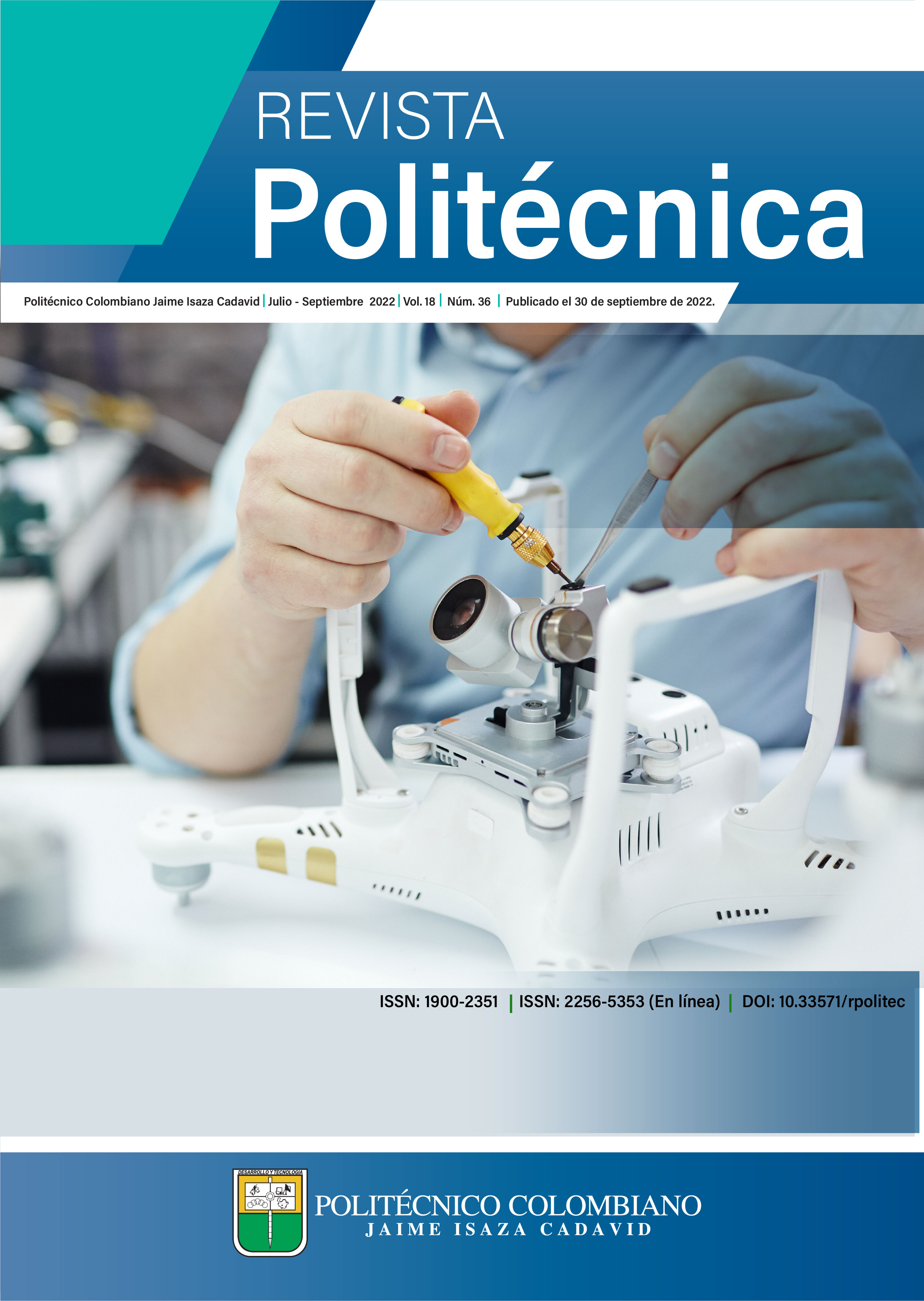Treatment of Acid Mine Drainage (AMD) through filters made with mining tailings.
DOI:
https://doi.org/10.33571/rpolitec.v18n36a9Keywords:
Acid mine drainage, acid pH neutralization, mining tailings, environmental passives, miningAbstract
Acid Mine Drainage poses a risk to human health and the environment when not managed properly; therefore, to promote an innovative and economic strategy for its adequate treatment focused on pH neutralization, five filters were made with mining tailings and other materials following the Design Thinking methodology. The main results show that it is possible to neutralize AMD with a pH of 2.5 from a mine in California, Santander, Colombia, and leave its effluent with pH values in a range of 6.0 to 8.1. The conclusion is that the clayey composition with the presence of calcium and carbonates made with the mentioned material in the mining, allows filters to neutralize AMD to such an extent that it is feasible to develop a large-scale project where these are included, which will allow treating AMD and mitigating environmental liabilities related to the accumulation of solid waste.
Article Metrics
Abstract: 643 PDF (Español (España)): 373 HTML (Español (España)): 197PlumX metrics
References
Organización de las Naciones Unidas, desafíos globales. Agua. https://www.un.org/es/global-issues/water
National Geographic, 11 datos interesantes sobre el agua. (15 de marzo de 2019). ¿Sabes cuánta agua dulce hay en la Tierra? ¿Cuánta gastas para ducharte? ¿Y cuántos seres humanos apenas tienen acceso a acuíferos con un mínimo de salubridad? https://www.nationalgeographic.es/photoaquae/2019/03/11-datos-interesantes-sobre-el-agua
Organización Mundial de la Salud. (21 de marzo de 2022). Agua para consumo humano. https://www.who.int/es/news-room/fact-sheets/detail/drinking-water
Cirelli, A. F. (2012). El agua: un recurso esencial. Quimica viva, 11(3), 147-170. https://www.redalyc.org/pdf/863/86325090002.pdf
Cabrera, I. (2015). Influencia del pasivo minero sulfometales sobre el drenaje ácido y elementos poten-cialmente tóxicos en el manglar [Tesis de maestría, Universidad de Pinar del Río Hermanos Saiz Montes de Oca]. Repositorio Institucional UPR.
Gallardo, D., Bruguera, N.C., Díaz Duque, J.A., y Cabrera, I. (2016). Impacto provocado por la minería en la zona de Santa Lucía, evaluación físico–química. Revista Minería & Geología, 31(4), 100-120. https://www.redalyc.org/pdf/2235/223543341007.pdf
Akcil A. y Koldas S. (2006). Acid Mine Drainage (AMD): causes, treatment and case studies. Journal of cleaner production 12-13(14), 1139-1145. https://www.sciencedirect.com/science/article/abs/pii/S0959652605000600
Guzmán, F., Arranz, J., Smoll, L., Collahuazo, L., Calderón, E., Otero, O., y Cabrilla, F. (2020). Manual para el inventario de minas abandonadas o paralizadas. https://www.researchgate.net/publication/341878675_MANUAL_PARA_EL_INVENTARIO_DE_MINAS_ABANDONADAS_O_PARALIZADAS
Oblasser, A. (2016). Estudio sobre lineamientos, incentivos y regulación para el manejo de los Pasivos Ambientales Mineros (PAM), incluyendo cierre de faenas mineras: Bolivia (Estado Plurinacional de), Chile, Colombia y el Perú. https://www.cepal.org/es/publicaciones/40475-estudio-lineamientos-incentivos-regulacion-manejo-pasivos-ambientales-mineros
Sucapuca F., Diaz J., Mogrovejo M., y Pérez G. (2017). Medidas de remediación de las aguas del embalse pasto grande, Modequegua – Peru. Ciencia y tecnología para el desarrollo 3(5), 83-90. https://core.ac.uk/reader/228843490
Arango M. y Olaya Y. (2012). Problemática de los pasivos ambientales mineros en Colombia. Gestión y ambiente 3(15), 125-133. https://revistas.unal.edu.co/index.php/gestion/article/view/36286/37829
Gallardo, D., Cabrera, I., Bruguera, N.C., Alonso, J.A., Pinto, A., y Milián, E. (2013). Chemical – phys-ical evaluation of the superficial waters in areas with miner-metallurgic activity in Santa Lucia, Pinar del Rio. In: Farfán, H., Corvea, J.L., de Bustamente, I. y LaMoreaux, J.W. (Eds.), Management of water re-sources in protected areas (pp. 293-300). Springer.
Gallardo Martínez, D., Bruguera Amarán, N., Díaz Duque, J. A., y Cabrera Díaz, I. (2020). Drenaje ácido de minas y su influencia en ecosistemas asociados al yacimiento Santa Lucía, Cuba. Revista Ibe-roamericana Ambiente & Sustentabilidad, 3(2), 67-81. https://doi.org/10.46380/rias.v3i2.79
Sanchez Rial, Jose Enrique, y Ferreira Centeno, Juan Pablo. (2016). Drenajes ácidos de Mina Alterna-tivas de tratamiento. Revista de Medio Ambiente y Minería, (1), 20-33. http://www.scielo.org.bo/scielo.php?script=sci_arttext&pid=S2519-53522016000100003&lang=es
Ministerio de ambiente y desarrollo sostenible. (2015). Resolución 0631.
Jones, Christopher. (1982). Métodos de diseño. España. Editorial Gustavo Gili.
Published
How to Cite
Issue
Section
License
Copyright (c) 2022 Brayan Serrano-Uribe, Walter Pardave-ivia, Camilo Hernando Castillo-Martínez

This work is licensed under a Creative Commons Attribution-NonCommercial-ShareAlike 4.0 International License.

























